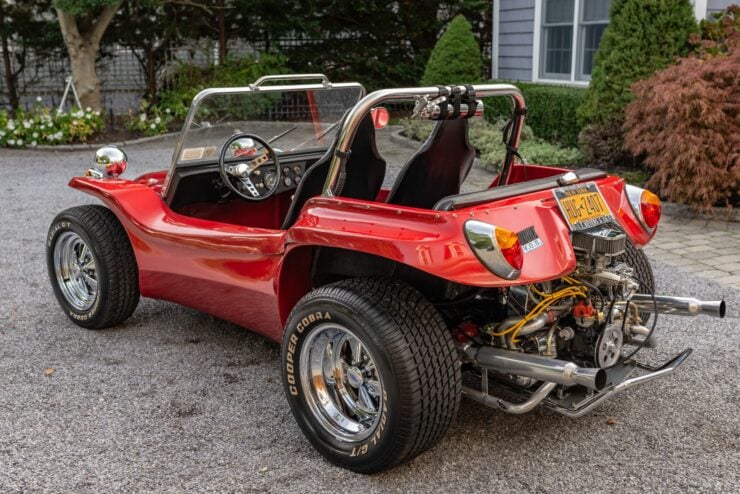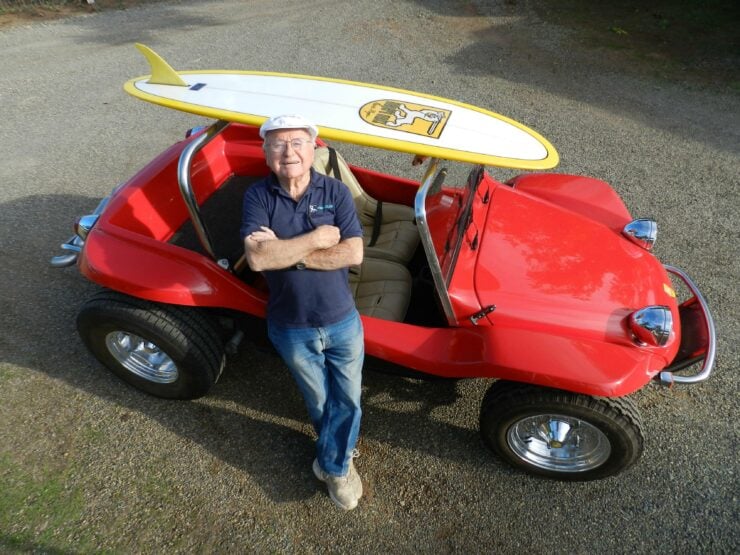This is an original Meyers Manx, the first and only authentic fiberglass-bodied Beetle-based beach buggy, and a vehicle that has spawned countless imitations over the years.
Bruce Meyers was an engineer, sailor, yacht builder, surfer, racing driver, and an artist who developed a fiberglass body tub that could be fitted to a shortened VW Beetle chassis. It proved ideal not just as a beach buggy but as a record breaking off road racer, sometimes with Meyers himself at the wheel.
Fast Facts – The Meyers Manx Beach Buggy
- The beach buggies of the 1950s were often simple affairs, often either cut down production cars or crudely welded vehicles that couldn’t be driven on the road.
- Bruce Meyers was an experienced yacht builder who was deeply familiar with fiberglass structures, he developed the first beach buggy to use a monocoque fiberglass body, and he was the first to use a shortened Beetle floorpan with the fiberglass body attached.
- The Beetle-based buggy would prove the most popular and the easiest to manufacture given the vast numbers of cheap Beetles available at the time.
- Bruce Meyers would develop a kit-built buggy based on the Beetle floorpan with one of his own fiberglass bodies on top. It would become an icon of the 1960s and the original survivors are now highly collectible.
Who Built The First Beach Buggy?
No one actually knows who built the first beach buggy – modified cars being driven on sand dunes (dune buggies) and on beaches began to climb in popularity in the 1950s. It would be Bruce Meyers who developed the first fiberglass-bodied beach buggy and put it into production – this type of buggy quickly became by far the most popular.
Above Video: This full length documentary tells the story of the most famous Beach Buggy of them all, the Meyers Manx.
The Origins Of The Meyers Manx
It almost seems like Bruce Meyers was destined to transform the world of beach buggies. As an engineer, a surfer, and a fiberglass yacht builder he had a unique set of abilities, and he was in the right place at the right time – Southern California in the early 1960s.
As a surfer it’s no surprise that Meyers had an interest in beach buggies, as they allowed quick and easy access to otherwise inaccessible breaks. The primitive nature of the buggies being built at the time, the late 1950s and early 1960s, must have rankled his inner-engineer and so he set out to build something better.
His first design was a masterpiece, but it proved too complex to be reliably mass-produced. It had a fiberglass body that acted as a monocoque structure, with the engine and front/rear suspension bolted directly onto it.
It was almost certainly one of the first composite monocoque tubs ever used in an automotive application, predating the same technique being used by many supercar makers by ~40 years.
For his second design Meyers opted for a simplicity-first approach. He took a VW Beetle floorpan and cut it down to shorten the wheelbase. He then developed a fiberglass tub-style body that bolted on top.
This design proved ideal as it used the Beetle suspension, brakes, engine, steering, and transmission – all of which remained attached to its original fixing points. Beetles were a cheap and easy to source donor at the time, and they could be modified with uprated suspension, improved engines, and larger wheels/tired for use in dunes and on beaches.
The Meyers Manx
Bruce Meyers opted to call his creation the Meyers Manx, named for the Manx cat which is known for its lack of a tail – in reference to the bobtail design of the buggy. Once the design was productionized it was offered for sale as a kit and it proved immediately popular.
In order to prove the durability of the design Bruce Meyers partnered with Ted Mangels to attempt the impossible – to break the 1,000 mile time record between Tijuana and La Paz that had been set by off-road racing legend Dave Ekins and Billy Robertson Jr. in 1962 on motorcycles.
Meyers and Mangels were followed by a journalist from Road & Track magazine to witness their feat, and they drove a specially prepared Meyers Manx. Remarkably the two men achieved their goal, setting a time of 34:45 and beating the old record by over five hours.
The media coverage following the Tijuana to La Paz run significantly boosted the profile of B. F. Meyers & Co. and it did no harm to sales – the company would sell over 6,000 of their kits.
Perhaps the most famous Manx of all was the highly-modified example powered by a Corvair engine that was driven by Steve MxQueen in the 1968 film The Thomas Crown Affair alongside Faye Dunaway.
Interestingly the company was brought back in the year 2000 and it recently announced that it’s going to be producing a line of 100% electric, road-legal beach buggies strongly influenced by the original Bruce Meyers design.
The Meyers Manx Shown Here
The Meyers Manx you see here has been authenticated by the Meyers registry as #0702. It’s finished in metallic red paint and it has chromed 15″ Cragar wheels, a polished roll bar, a black interior, and it comes with a matching surfboard.
As with almost all examples of the Meyers Manx this buggy is powered by a VW Beetle flat-four, a 1.6 liter replacement unit in this case mounted to a four-speed transmission. This engine is topped with a Weber carburetor and it has a dual exhaust system.
This Manx has polished chrome nudge bars front and back to help preserve the fiberglass body, Hella H4 headlights, front disc brakes, and it’s showing 10,000 miles on the odometer.
If you’d like to read more about this unusual buggy or register to bid you can visit the listing here on Bring a Trailer. It’s being offered for sale out of Islip Manor, New York.
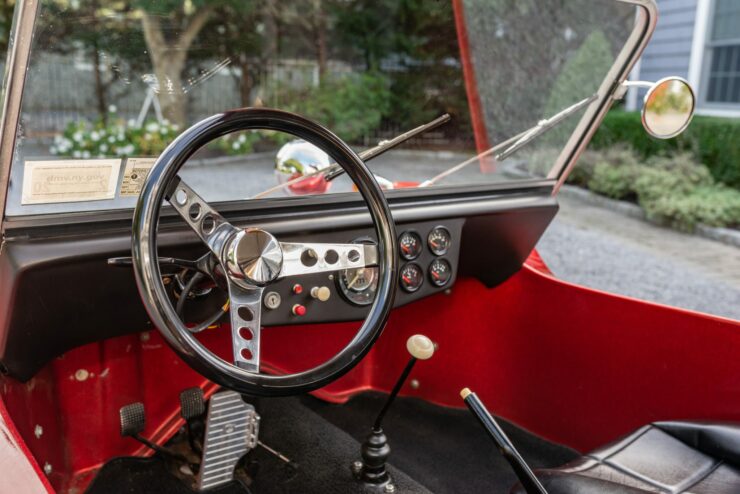
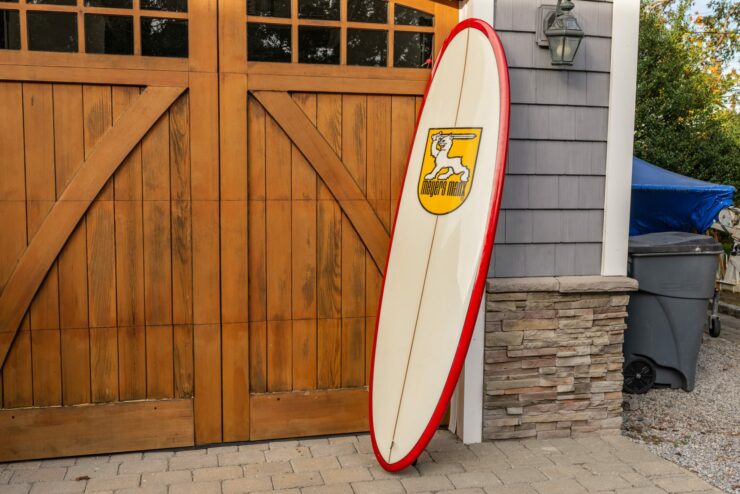

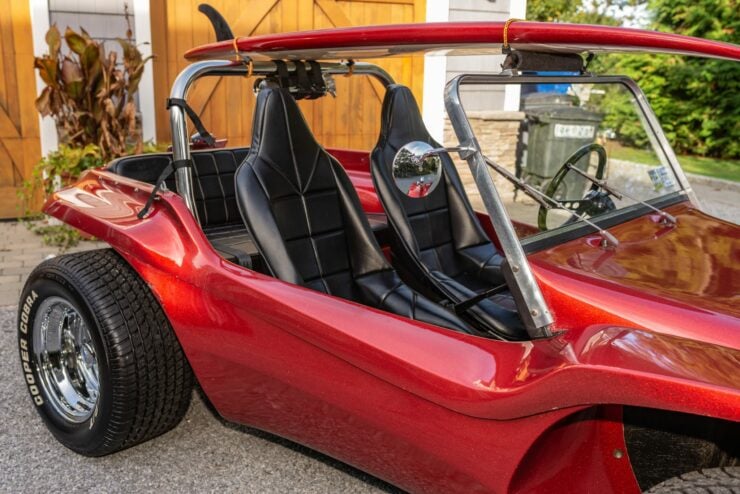
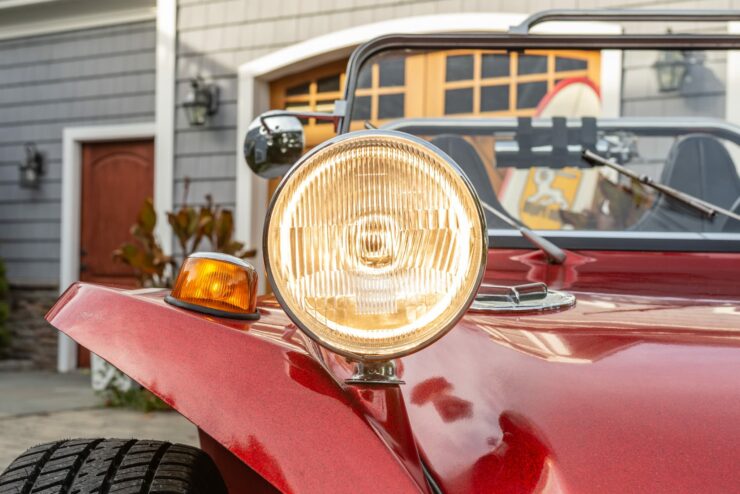
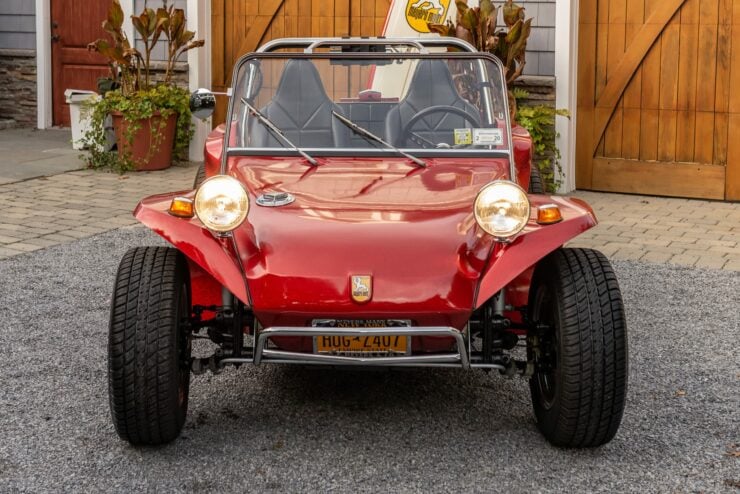
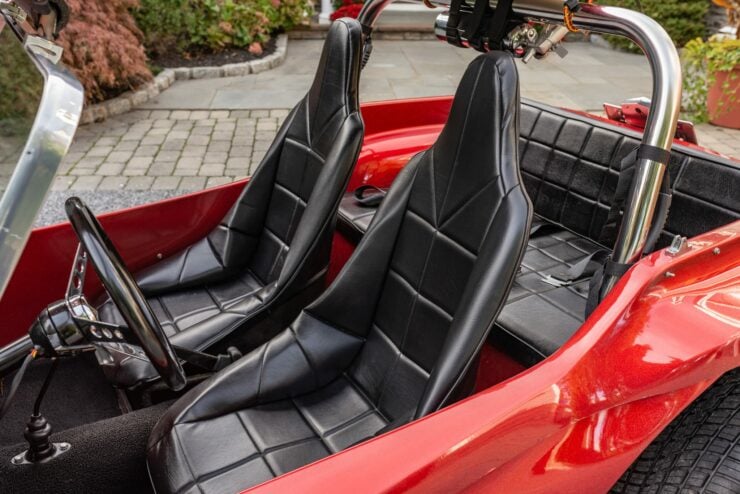


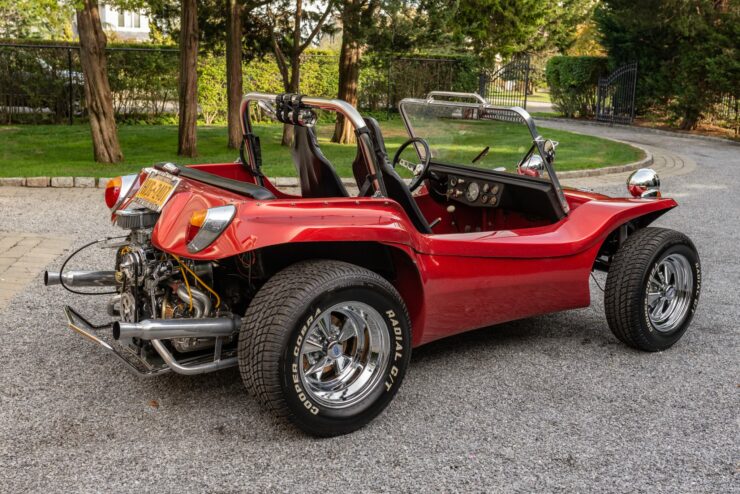
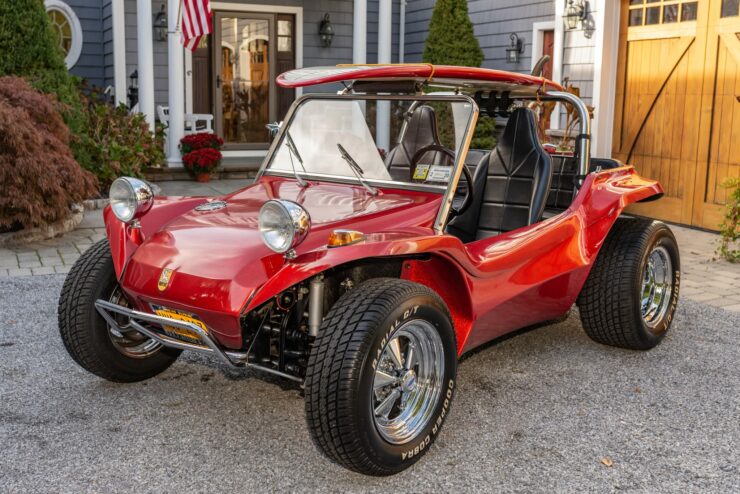
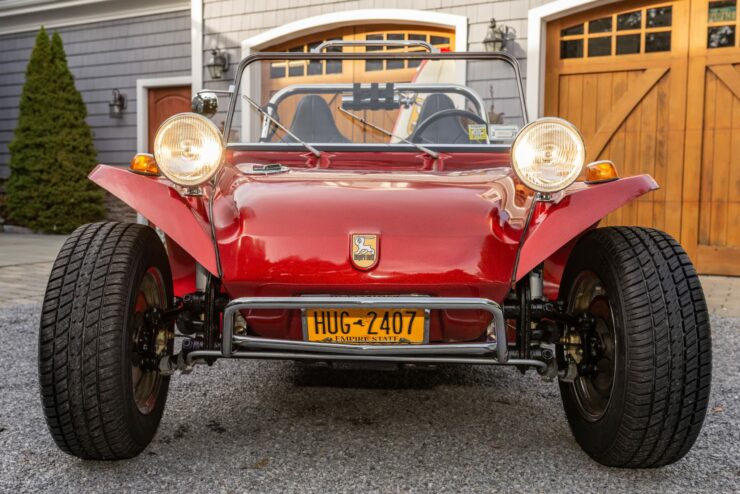
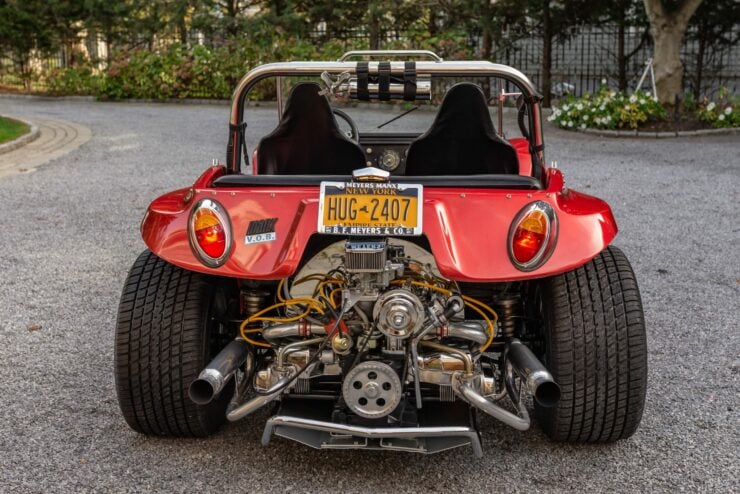
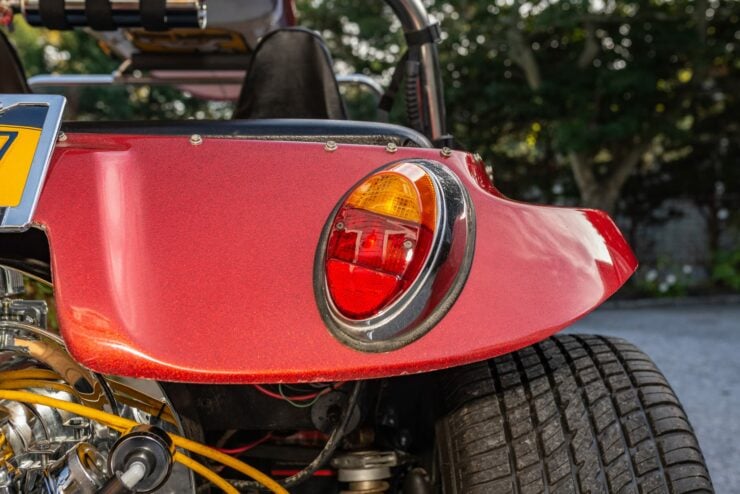
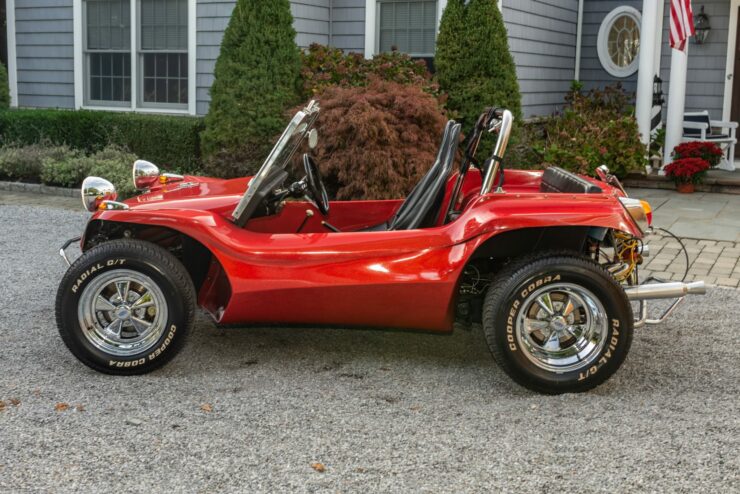
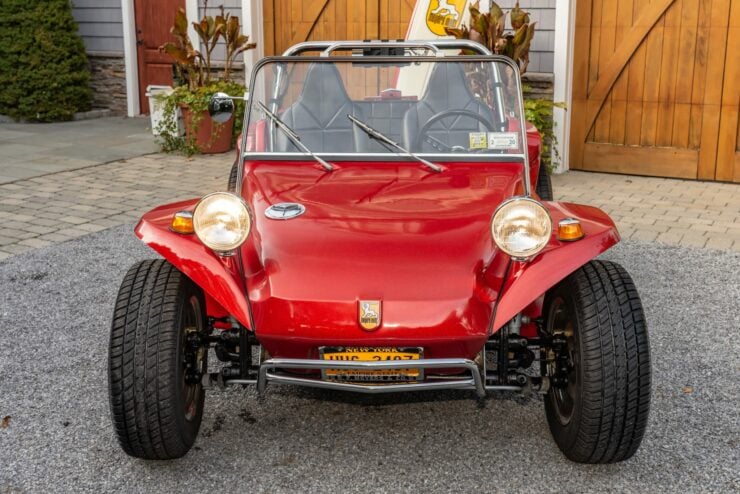
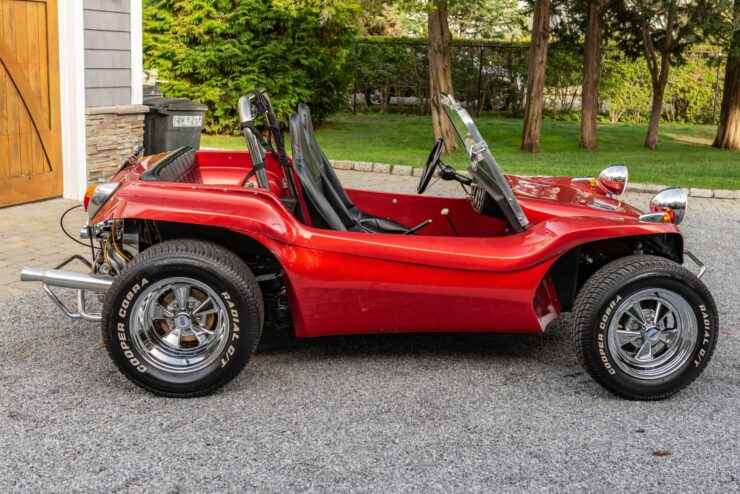
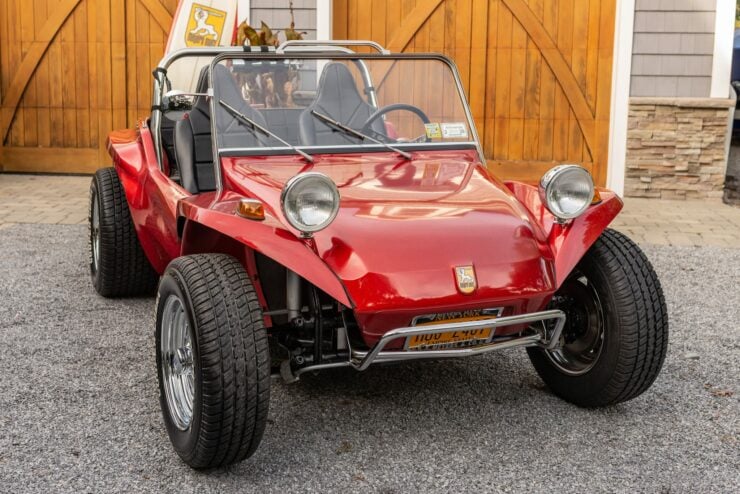
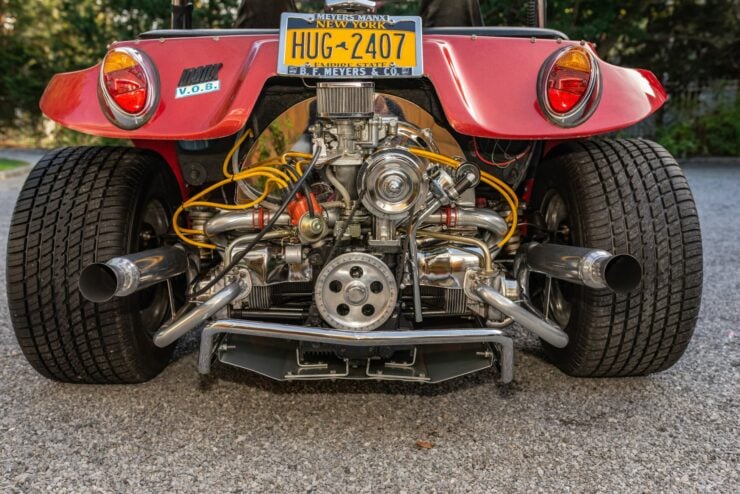
Images courtesy of Bring a Trailer
The post For Sale: An Original Meyers Manx Beach Buggy – A 1960s Icon appeared first on Silodrome.
from Silodrome https://silodrome.com/meyers-manx-beach-buggy-car/
via gqrds
